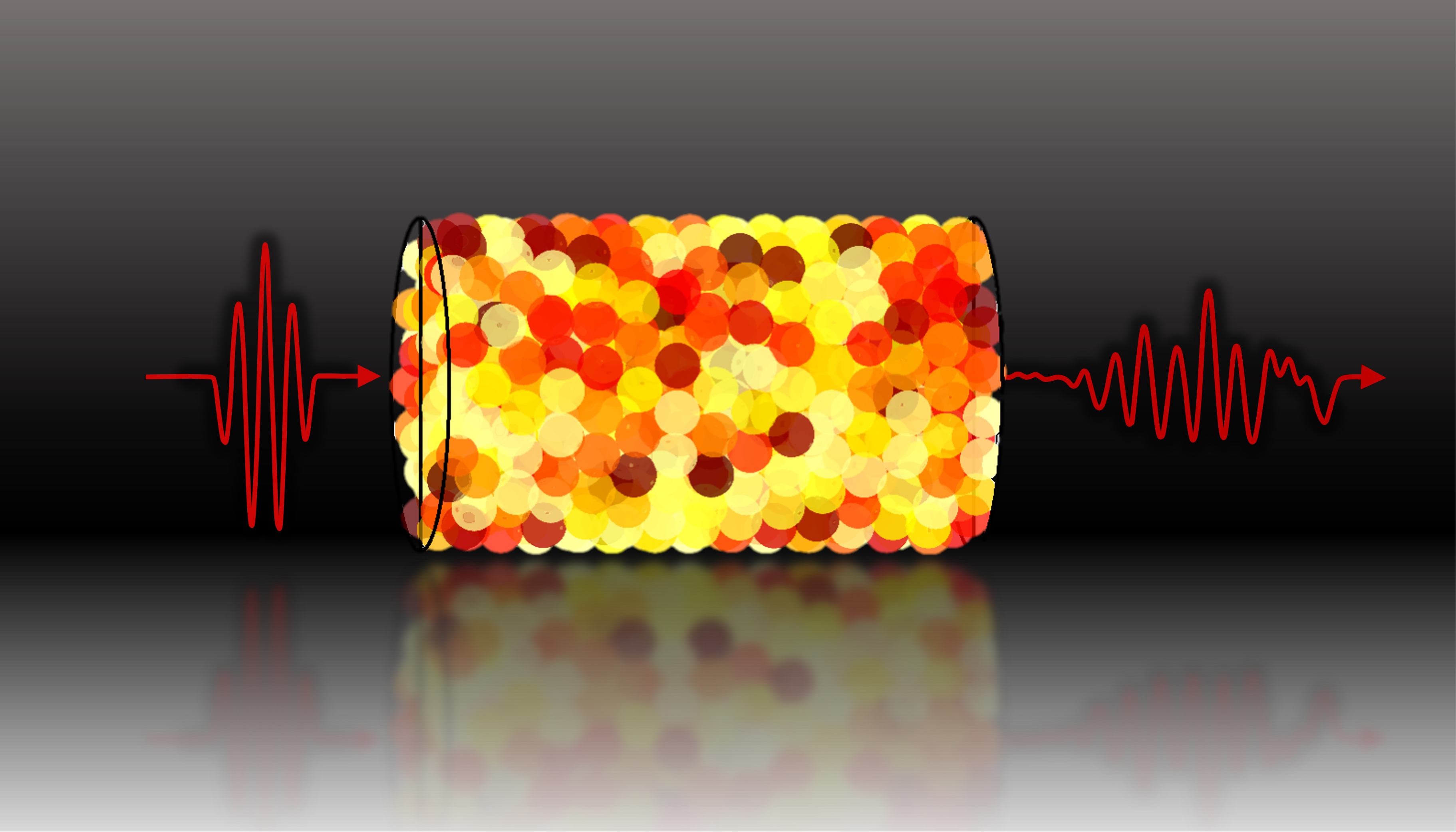Stress wave propagation through granular material is important for detecting the magnitude of earthquakes, locating oil and gas reservoirs, designing acoustic insulation and designing materials for compacting powders.
A team of researchers including Lawrence Livermore National Laboratory (LLNL) physicist Eric Herbold used X-ray measurements and analyses to show that velocity scaling and dispersion in wave transmission is based on grainy particle arrangements and chains of force between them, while reduction of wave intensity is caused mainly from grainy particle arrangements alone. The research appears in the June 29 edition of the journal the Proceedings of the National Academy of Sciences.
“The mechanisms we investigate have been used to explain earthquake triggering, but also are important for accurately pressing explosive powders,” Herbold said. “The pharmaceutical industry is very interested in how powder gets compacted as well as the mining, farming (literal grains) and construction (slope stability, etc.) sectors.”
Structure-property relations of granular materials are governed by the arrangement of particles and the chains of forces between them. These relations enable design of wave damping materials and non-destructive testing technologies. Wave transmission in granular materials has been studied extensively and demonstrates unique features: power-law velocity scaling, dispersion and attenuation (the reduction of the amplitude of a signal, electric current, or other oscillation).
Earlier research, dating back to the late 1950s, described “what” may be happening to the material underlying wave propagation, but the new research provides evidence for “why.”
“The novel experimental aspect of this work is the use of in-situ X-ray measurements to obtain packing structure, particle stress and inter-particle forces throughout a granular material during the simultaneous measurement of ultrasound transmission,” said Ryan Hurley, a former LLNL postdoc and now an assistant professor of mechanical engineering at Johns Hopkins University. Hurley also is a lead author of the paper. “These measurements are the highest fidelity dataset to date investigating ultrasound, forces and structure in granular materials.”
“These experiments, along with the supporting simulations, allow us to reveal why wave speeds in granular materials change as a function of pressure and to quantify the effects of particular particle-scale phenomena on macroscopic wave behavior,“ said Chongpu Zhai, a Johns Hopkins University postdoc who led the data analysis efforts and was first author on the paper.
The research provides new insight into time- and frequency-domain features of wave propagation in randomly packed grainy materials, shedding light on the fundamental mechanisms controlling wave velocities, dispersion and attenuation in these systems.
Scientists from Johns Hopkins University also contributed to the research, which was funded by LLNL’s Laboratory Directed Research and Development program and performed at the Advanced Photon Source, an Office of Science User Facility, operated by Argonne National Laboratory.
Original post https://alertarticles.info
